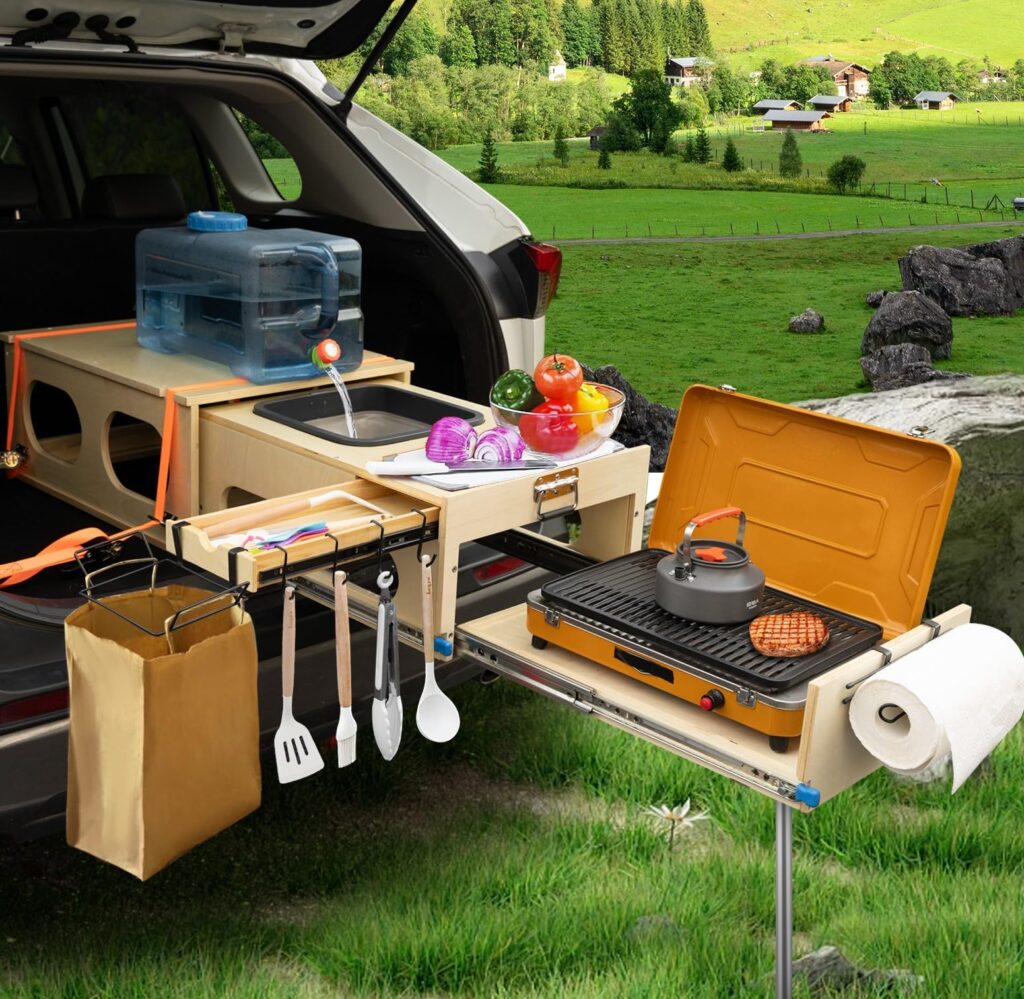Car camping is an exciting and budget-friendly way to explore the outdoors without sacrificing comfort. Whether you’re heading to a national park, a secluded beach, or a roadside rest area, turning your car into a mobile campsite allows you to enjoy nature while having a secure, weatherproof shelter. This guide will walk you through everything you need to know to set up your vehicle for a comfortable and convenient camping experience.
Choosing the Right Vehicle for Car Camping
The first step in successful car camping is selecting the right vehicle. While any car can technically be used for camping, some vehicles are better suited for the experience than others. SUVs, minivans, and hatchbacks are ideal due to their spacious interiors and foldable back seats. If you own a pickup truck, a truck bed tent can enhance your setup. Even compact cars can work with the right organization and sleeping setup.
Before setting out on your journey, ensure that your car is in good condition. Check the brakes, tires, and fluid levels to prevent any breakdowns. A reliable vehicle is crucial for a smooth car camping adventure.
Setting Up a Comfortable Sleeping Area
A comfortable sleeping arrangement is key to a successful car camping trip. Depending on your vehicle, you may have several options:
Fold-Down Seats: Many SUVs and minivans allow you to fold down the back seats, creating a flat surface for sleeping.
Inflatable Mattress: A mattress designed for car camping fits snugly into your vehicle, providing extra cushioning.
Sleeping Pads and Blankets: If space is limited, sleeping pads and thick blankets offer insulation and comfort.
To block out light and add privacy, use window covers, sunshades, or DIY curtains made from blackout fabric. Ensuring proper ventilation is also essential. Crack the windows slightly or use bug nets to prevent insects from entering while keeping the air fresh.
Essential Gear for Car Camping
Packing the right gear can make your car camping trip more enjoyable. Here are the must-have items:
Bedding: Sleeping bag, blankets, and pillows
Lighting: LED lanterns, string lights, or headlamps
Cooking Supplies: Portable stove, fuel, utensils, and non-perishable food
Cooler: A compact cooler to keep food and drinks fresh
Water Storage: Reusable water jugs for drinking and washing
Portable Toilet & Hygiene Kit: Wet wipes, biodegradable soap, and a small shovel for responsible waste disposal
Power Bank & Charging Devices: To keep your phone and gadgets powered up
First Aid Kit: Bandages, pain relievers, and essential medicines
Camping Chairs & Table: Foldable furniture for outdoor relaxation
Having a well-stocked vehicle ensures that you stay comfortable and self-sufficient throughout your trip.
Finding the Best Campsites for Car Camping
Choosing the right location is crucial for a successful car camping experience. Some great options include:
- National Parks & Forests: Many national parks allow car camping at designated sites, often with restroom facilities.
- Bureau of Land Management (BLM) Land: Free or low-cost camping spots available in many regions.
- Campgrounds: Paid campsites with amenities like showers, picnic tables, and fire pits.
- Rest Stops & Overnight Parking Areas: Some highway rest stops and retailers like Walmart allow overnight stays.
Before camping, research local regulations to avoid fines or disruptions. Apps like iOverlander and Campendium can help you find legal and safe spots for car camping.
Cooking and Meal Preparation While Car Camping

Cooking on the road doesn’t have to be complicated. A small camping stove or portable grill makes it easy to prepare hot meals. Prepping ingredients at home, such as chopping vegetables and marinating meats, can save time. Simple meals like pasta, sandwiches, and grilled vegetables are easy to make and require minimal cleanup.
For food storage, use a well-insulated cooler or a portable fridge to keep perishables fresh. Bring non-perishable snacks like nuts, dried fruits, and protein bars for quick and easy energy boosts.
Staying Safe While Car Camping
Safety should always be a priority when car camping. Here are some essential tips:
Choose Safe Locations: Avoid isolated or sketchy areas. Opt for designated camping sites whenever possible.
Lock Your Doors: Always keep your vehicle locked, especially at night.
Be Aware of Wildlife: Store food properly to avoid attracting animals.
Carry Emergency Supplies: A flashlight, extra batteries, and an emergency whistle can be lifesavers in unexpected situations.
Keep a Low Profile: Avoid drawing attention by keeping lights dim and reducing noise.
Enjoying the Experience of Car Camping
Car camping is about embracing the adventure and making memories. Whether you prefer quiet nights under the stars or socializing around a campfire, this type of travel offers flexibility and freedom. Bring along a camera, a good book, or outdoor games to enhance your experience.
Spending time in nature has numerous benefits, from reducing stress to improving mood. Take the time to enjoy scenic landscapes, hike nearby trails, or simply relax in your cozy vehicle setup.
Conclusion
Car camping is an affordable and exciting way to explore new destinations while staying comfortable and self-sufficient. With proper preparation, the right gear, and a good camping spot, you can turn your vehicle into a mobile retreat. Whether you’re a seasoned camper or a beginner, car camping is a fantastic way to connect with nature and enjoy the great outdoors on your terms. So pack your essentials, plan your route, and get ready for an unforgettable adventure!
